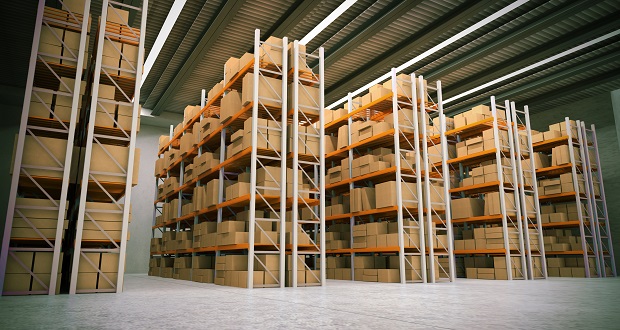A warehouse is an essential part of the supply chain. It’s a hub that ensures that the other areas of a business are running smoothly. This means that a good warehouse is not an option but a necessity. Aside from that, a warehouse’s efficiency can make or break a business’ bottom line. An effective warehouse design needs to be planned carefully for businesses to maximise and optimise space in it.
 When a warehouse is organised well, receiving new inventory, storing, and shipping are done through an efficient and streamlined process. With proper handling and storing of goods, there will be minimal clutter, damages, and spoilage. And to help you organise your warehouse for efficiency, here are six tips that you can easily implement.
When a warehouse is organised well, receiving new inventory, storing, and shipping are done through an efficient and streamlined process. With proper handling and storing of goods, there will be minimal clutter, damages, and spoilage. And to help you organise your warehouse for efficiency, here are six tips that you can easily implement.
- Start With The Warehouse Floor Plan
A floor plan is not just important in residential buildings, it is also important for warehouse facilities. The warehouse must have a floor plan where spaces can be categorised by function, such as receiving, packing, shipping, and storage. Also, look at the means used to move these products from one area to the other. That means taking into account human traffic, forklift, or conveyor belts. Remember also to install rubber cable grommets to protect your cables from abrasions and other hazards.
 The layout should be based on the type of goods and the sales volume that goes through the warehouse regularly. Looking at the inventory records, you should have an idea of which goods are fast-moving and which ones are not. The fast movers need to be placed closer to the receiving and distribution areas. This ensures that the movement of such goods is flawless—all from their receipt or arrival up to their departure from the warehouse.
The layout should be based on the type of goods and the sales volume that goes through the warehouse regularly. Looking at the inventory records, you should have an idea of which goods are fast-moving and which ones are not. The fast movers need to be placed closer to the receiving and distribution areas. This ensures that the movement of such goods is flawless—all from their receipt or arrival up to their departure from the warehouse.
- Organise From The Employees’ Point Of View
To create a warehouse organisation plan that will work, visit the warehouse and examine how the entire process flows. Act like you’re pulling an order and track it through the warehouse from when it’s received until it’s shipped and delivered. Look at what an employee goes through every day. Take note of the things that cause delays or slows down the process, and how you can organise the warehouse to improve those areas.
Also, look at how the equipment is placed and whether they have all the essential components, such as the cable glands which prevent cables from being pulled out of the equipment. Seek feedback from managers and employees on the critical details that would help optimise space and improve efficiency. The combined view of the people on the ground and the management can help create a more organised system that will work for all areas.
- Ensure Everything Has Its Place
Having a place for everything is crucial to an effective warehouse. Effectively managing inventory and having proper storage are two of the most important aspects of any warehouse. When everything has its place, accessing goods is easier and incidents of misplacement or loss could be reduced. But for this to happen, you need proper storage solutions.
First, everything in the warehouse needs to be labelled properly. So, adopt the practice of giving a group of goods a name and then mark them appropriately. This way, it’s easier to categorise them and place them in the right areas.
One of the things you can do to create more space is by leveraging the vertical space. You make more room on the floor for other activities this way. You can use vertical racks, shelves, or containers. These are durable and strong and can be stacked as high as they can go or as the warehouse design or building code permits. In addition, they’re safe and will help keep goods protected from damage.
- Make Use Of New Technology
There are software and programs for warehouse management that are designed to streamline operations and processes related to data collection, inventory, storage, and shipment tracking. Technology can come in handy, especially when it comes to determining weak points and problems in the process.
Shipments and deliveries are also going to be tracked through these apps. It will be easier to monitor delivery riders and pinpoint routes and traffic situations that are causing delays in the shipment and delivery process.
Final Thoughts
An organized warehouse is also a productive and efficient one. To create an organized warehouse, you need to streamline all other processes in the supply chain to reduce errors, damages, and losses. Optimising the floor plan, proper labelling, and using new technology are just some of the ways that can help increase the efficiency of a warehouse. Regularly auditing and reviewing warehouse procedures can also help.




Comments are closed.